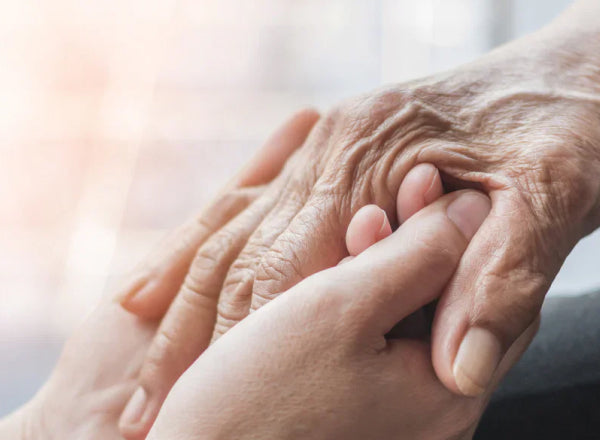
Sarcopenic obesity
What is sarcopenia?
Sarcopenia is the age-related loss of muscle. It leads to loss of muscle power, which can result in frailty and disability.1 Sarcopenia is significantly associated with self-reported physical disability in both men and women, independent of ethnicity, age, morbidity, obesity, income, or health behaviours.2 As the number and proportion of older persons in the population continues to rise, sarcopenia-related morbidity will also increase.
The European Working Group on Sarcopenia in Older People (EWGSOP) recommends using the presence of both low muscle mass and low muscle function (strength or performance) for the diagnosis of sarcopenia.3
There are several mechanisms involved in the development of sarcopenia including endocrine function, nutritional inadequacy and muscle inactivity, as well as being associated with underlying medical conditions.3
Sarcopenic obesity
Alongside the increasing age of the population is the increasing prevalence of metabolic conditions associated with obesity. As a result patients are now presenting with age-induced skeletal-muscle atrophy and increased adiposity. This is known as sarcopenic obesity.4 A great number of adults over the age of 65 are now classified as having sarcopenic obesity, a high-risk geriatric syndrome predominantly observed in an ageing population that is at risk of synergistic complications from both sarcopenia and obesity.5 The European Society for Clinical Nutrition and Metabolism (ESPEN) and the European Association for the Study of Obesity (EASO) have defined sarcopenic obesity as the co-existence of obesity and sarcopenia.6
It is difficult to determine sarcopenic obesity prevalence rates due to the lack of a consistent definition. The National Health and Nutrition Examination Survey in the US found that rates of sarcopenic obesity were 12.6% in men and 33.5% in women. These rates increased with age to 27.5% in men and 48% in women over 80 years of age.7 Sarcopenic Obesity is more frequently present in older adults, in part, due to the changes observed in body composition which in general accompany the ageing process. However, it is not uniquely a geriatric condition (or limited to older adults).8 In a recent systematic review the mean age of the studied population was below 65 years.9
Consequences of sarcopenic obesity
Despite historical challenges with a consistent definition of sarcopenic obesity, several studies have concluded the potential consequences of sarcopenic obesity may include:
- Disability or impairments:
Sarcopenic obesity associated with relative risk of incident disability was 2.63 over 8 years, when compared with a healthy body composition.10 Difficulties ascending and descending stairs were 2.6 and 2.35 higher, respectively, when compared to healthy body composition.11 Muscle strength is a stronger predictor of long-term functional decline than muscle mass. A study by Batsis et al12 concluded that low muscle strength and elevated BMI are strongly associated with increased risk of functional decline - Metabolic impairments
Individuals with sarcopenic obesity have been shown to have increased risk of dyslipidaemia and significant positive associations with insulin resistance.13 - Comorbidities
Individuals with sarcopenic obesity have a higher risk of radiographic knee osteoarthritis.14 - Mortality
The British Regional Heart Study, a 6-year prospective study of 4,252 men aged 60–79 years, reported a 55% higher risk of mortality in men with a high waist circumference (>102 cm) and low mid-arm muscle circumference (sarcopenic obesity) than in those without sarcopenia or obesity.15 An 11-year follow-up of the British Regional Heart Study, men with sarcopenic obesity had a higher all-cause mortality risk than those with sarcopenia without obesity and non-sarcopenic obese men.16 - Quality of life
The presence of sarcopenic obesity has been shown to be associated with increased impairment of Health Related Quality of Life that reaches clinical significance when compared to obesity only. However, further studies are needed to clarify whether this may influence clinical outcomes.17 - Institutionalisation and health-care utilisation
- In a cohort study of 451 elderly men and women, subjects with sarcopenic obesity had a 2.5-fold increased risk of disability during an 8-year follow-up period than individuals without sarcopenic obesity.18
Management of sarcopenic obesity
Lifestyle interventions, including calorie restriction and physical activity, are hallmarks of treating sarcopenic obesity. A number of potential interventions have been postulated as treatments for sarcopenic obesity.5 These interventions are aimed at the loss of body weight and fat mass and consist of diet modifications, increasing physical activity or specific exercise training, and behavioural therapy.
- Calorie restriction
The goal of calorie restriction is to lose body fat and improve physical function, aiming for a restriction of 500-1000kcal per day. - Aerobic exercise
To improve cardiorespiratory fitness by aiming for 150 minutes/week of moderate to vigorous aerobic exercise. - Resistance exercises
To improve muscle strength and mass, and attenuate loss of muscle and bone during weight loss efforts, it is suggested to aim for 60-75 min of resistance training three times a week. - Protein supplementation
To mitigate loss of muscle mass, aim for 1.0-1.2g protein/kg body weight/day. Distributing protein intake throughout the day or pulse feeding at main meals could be beneficial for the stimulation of muscle protein synthesis in patients with sarcopenic obesity. - Calcium supplementation
To prevent potential disturbances in bone metabolism, it is suggested that calcium requirements are 1200mg/day – preferably met through dietary sources. - Vitamin D supplementation
To prevent potential disturbances in bone metabolism, aim for 1000 IU (25mcg)/day of Vitamin D.
Protein and sarcopenic obesity - what does the evidence tell us?
Energy restriction alone can be successful for body weight loss, but can be costly in terms of losses in muscle mass. It is estimated that approximately 25% of the weight loss achieved with short-term energy-restricted diets is loss of lean muscle mass.19 Therefore, it is important to consider protein requirements. It is well established that protein is needed for muscle protein synthesis. Protein has also been shown to have appetite-suppressive effects, which is useful in calorie restriction.20 The source of protein, timing of intake and specific amino acid constituents can also be factors in increasing muscle mass and strength.
The PROT-Age group recommends 1.0–1.1 g/kg protein per day.21 However, this recommendation does not take into account the complex physiological changes of ageing or the presence of sarcopenic obesity.
A study of older women with sarcopenic obesity found that those who supplemented protein in their diet had a significant increase in muscle mass. The total protein intake was equivalent to 1.2g/kg desirable body weight/day of protein.22
Numerous studies have shown that protein supplementation combined with resistance exercise training has an overall positive effect on body composition, muscle volume, muscle strength, and physical mobility in older people, including overweight and obese individuals. These studies are based on different types of protein supplementation including whey protein, leucine, casein, milk protein, and the leucine metabolite β-hydroxy β-methylbutyrate.23 The systematic review and meta-analysis by Liao et al23 indicated that protein supplementation plus resistance exercise training exerts significant effects on lean body mass and muscle volume and long intervention periods (greater than 24 weeks) led to substantially greater lean mass gains
Although the long-term intervention studies that are investigating the optimal protein intake for the sarcopenic obese individuals are lacking, a minimal intake of 1.0–1.2 g/kg of body weight seems essential to maintain muscle mass in this population, to compensate for the anabolic resistance that is present in sarcopenic obesity, especially in periods of energy deficit.24
In addition, the connection between the influence of dietary protein on the gut microbiome and its impact on sarcopenia and obesity has been explored. Dietary protein is the gut microbiota’s primary source of amino acids, which can be used for protein synthesis and energy metabolism. It has been suggested that protein sources and amino-acid balance may influence gut microbial diversity. At present, more human studies investigating the microbiome of sarcopenic obese groups are warranted.4
Numerous studies have shown that protein supplementation combined with resistance exercise training has an overall positive effect on body composition, muscle volume, muscle strength, and physical mobility in older people, including overweight and obese individuals. These studies are based on different types of protein supplementation including whey protein, leucine, casein, milk protein, and the leucine metabolite β-hydroxy β-methylbutyrate.25
Summary
Protein is a valuable macronutrient in the treatment of sarcopenic obesity alongside other lifestyle interventions such as vitamin D & calcium supplementation and resistance exercise. Ensuring an adequate protein intake and aiming for 1.0-1.2g protein/kg body weight/day can help to support an increase in muscle mass.
- ◄References:
-
- Morley JE. Sarcopenia in the elderly. Fam Pract. 2012 Apr;29 Suppl 1:i44-i48. doi: 10.1093/fampra/cmr063. PMID: 22399555.
- Baumgartner RN et al. Epidemiology of sarcopenia among the elderly in New Mexico. American journal of epidemiology. 1998;147(8):755–63.
- Cruz-Jentoft AJ et al; European Working Group on Sarcopenia in Older People. Sarcopenia: European consensus on definition and diagnosis: Report of the European Working Group on Sarcopenia in Older People. Age Ageing. 2010 Jul;39(4):412-23. doi: 10.1093/ageing/afq034. Epub 2010 Apr 13. PMID: 20392703; PMCID: PMC2886201.
- Prokopidis K et al. Impact of Protein Intake in Older Adults with Sarcopenia and Obesity: A Gut Microbiota Perspective. Nutrients. 2020 Jul 30;12(8):2285. doi: 10.3390/nu12082285. PMID: 32751533; PMCID: PMC7468805.
- Batsis JA and Villareal DT. Sarcopenic obesity in older adults: aetiology, epidemiology and treatment strategies. Nat Rev Endocrinol. 2018 Sep;14(9):513-537. doi: 10.1038/s41574-018-0062-9. PMID: 30065268; PMCID: PMC6241236.
- Donini L, M et al: Definition and Diagnostic Criteria for Sarcopenic Obesity: ESPEN and EASO Consensus Statement. Obes Facts 2022;15:321-335. doi: 10.1159/000521241
- Batsis JA et al. Low lean mass with and without obesity, and mortality: results from the 1999–2004 National Health and Nutrition Examination Survey. J. Gerontol. A Biol. Sci. Med. Sci 2017, 72, 1445–1451
- Batsis JA et al. Variation in the prevalence of sarcopenia and sarcopenic obesity in older adults associated with different research definitions: dual-energy X-ray absorptiometry data from the National Health and Nutrition Examination Survey 1999– 2004. J Am Geriatr Soc 2013;61(6):974e80.
- Donini LM et al. Critical appraisal of definitions and diagnostic criteria for sarcopenic obesity based on a systematic review. Clin Nutr. 2020 Aug;39(8):2368–88.
- Baumgartner RN et al. Sarcopenic obesity predicts instrumental activities of daily living disability in the elderly. Obes. Res 12, 1995–2004 (2004).
- Rolland Y et al. Difficulties with physical function associated with obesity, sarcopenia, and sarcopenic- obesity in community-dwelling elderly women: the EPIDOS (EPIDemiologie de l’OSteoporose) Study. Am. J. Clin. Nutr 89, 1895–1900 (2009).
- Batsis JA et al. Dynapenic obesity and the effect on long-term physical function and quality of life: data from the osteoarthritis initiative. BMC Geriatr 15, 118 (2015).
- Baek SJ et al. Sarcopenia and sarcopenic obesity and their association with dyslipidemia in Korean elderly men: the 2008–2010 Korea National Health and Nutrition Examination Survey. J. Endocrinol. Invest 37, 247–260 (2014)
- Lee S et al. Sarcopenic obesity is more closely associated with knee osteoarthritis than is non sarcopenic obesity: a cross-sectional study. Arthritis Rheum 64, 3947–3954 (2012)
- Wannamethee SG et al. Decreased muscle mass and increased central adiposity are independently related to mortality in older men. Am J Clin Nutr. (2007) 86:1339–46. doi: 10.1093/ajcn/86.5.1339
- Atkins JL et al. Sarcopenic obesity and risk of cardiovascular disease and mortality: a population-based cohort study of older men. J Am Geriatr Soc. (2014) 62:253–60. doi: 10.1111/jgs.12652
- Itani L et al. The Impact of Sarcopenic Obesity on Health-Related Quality of Life of Treatment-Seeking Patients with Obesity. Curr Diabetes Rev. 2020;16(6):635-640. doi: 10.2174/1573399816666200211102057. PMID: 32072914.
- Baumgartner RN et al. Sarcopenic obesity predicts instrumental activities of daily living disability in the elderly. Obes Res. (2004) 12:1995–2004. doi: 10.1038/oby.2004.250
- Goisser S et al. Sarcopenic obesity and complex interventions with nutrition and exercise in community-dwelling older persons--a narrative review. Clin Interv Aging. 2015 Aug 6;10:1267-82. doi: 10.2147/CIA.S82454. PMID: 26346071; PMCID: PMC4531044.
- Pasiakos S.M. Metabolic advantages of higher protein diets and benefits of dairy foods on weight management, glycemic regulation, and bone. J. Food Sci. 2015;80(Suppl. 1):A2–A7. doi: 10.1111/1750-3841.12804
- Bauer J et al. Evidence-based recommendations for optimal dietary protein intake in older people: a position paper from the PROT-AGE Study Group. J. Am. Med. Dir. Assoc 14, 542–559 (2013).
- Muscariello E et al. Dietary protein intake in sarcopenic obese older women. Clin Interv Aging. 2016 Feb 5;11:133-40. doi: 10.2147/CIA.S96017. PMID: 26917955; PMCID: PMC4751896.
- Chun-De Liao et al. Effects of protein supplementation combined with resistance exercise on body composition and physical function in older adults: a systematic review and meta-analysis, The American Journal of Clinical Nutrition, Volume 106, Issue 4, October 2017, Pages 1078–1091, https://doi.org/10.3945/ajcn.116.143594.
- Trouwborst I et al. Exercise and Nutrition Strategies to Counteract Sarcopenic Obesity. Nutrients. 2018 May 12;10(5):605. doi: 10.3390/nu10050605. PMID: 29757230; PMCID: PMC5986485.
- Chun-De Liao et al. Effects of protein supplementation combined with resistance exercise on body composition and physical function in older adults: a systematic review and meta-analysis, The American Journal of Clinical Nutrition, Volume 106, Issue 4, October 2017, Pages 1078–1091, https://doi.org/10.3945/ajcn.116.143594

















